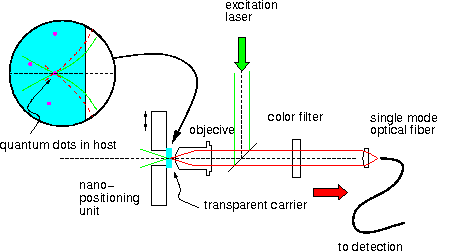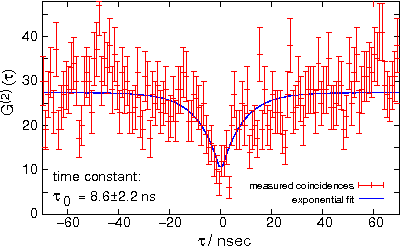Colloidal quantum dots
Light interaction with matter on a single quanta level is a process that in principle can be used for construction of gates for quantum computation. Semiconductor Quantum Dots (QD) are one of the good candidates to be applied for such a task. Quantized levels of a single QD permits it to serve as a single photon source and relatively high nonlinearity of these objects can allow efficient interaction of two (and more) photons, leading possibly to their entanglement.
Experimental facilities
In our experiments
we are able to prepare and optically address a single QD in a confocal
microscope, and investigate their spectral emission properties as well
as the quantum statistics of the scattered light.

Single quantum dots
The crucial question is to be able to stabilize a single QD at
a room temperature. A stable quantum dot in a transparent matrix
can serve in a first step as a single photon source, with an ability to
tune the emission wavelength by engineering the size of the dots.
A signature of a identification of both a single quantum dot and a
nonclassical light emission behavior is obtained from the photon
statistics observed in a Hanbury-Brown - Twiss experiment, where we
clearly observe photon antibunching in a CdSe/ZnS core-shell dot:


